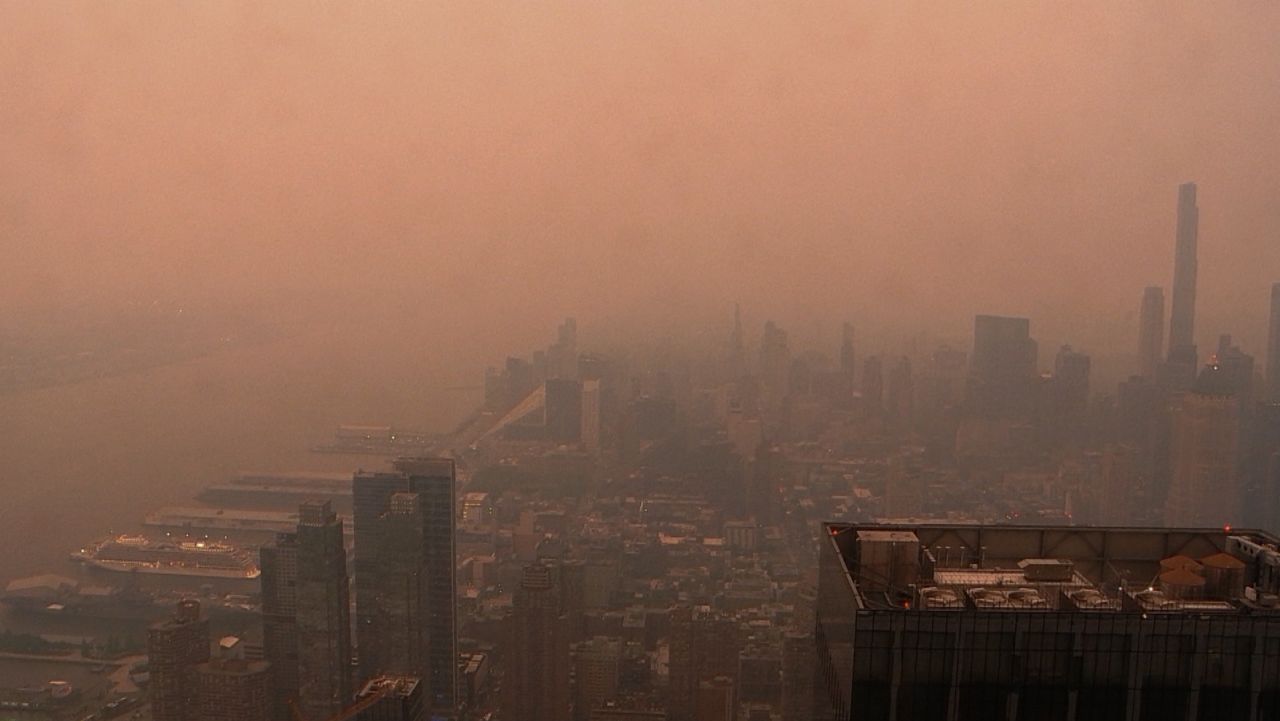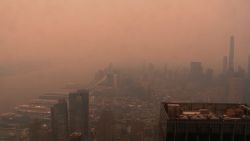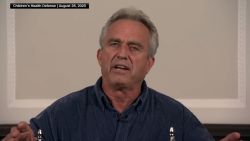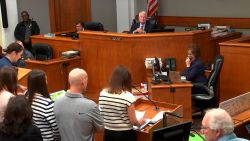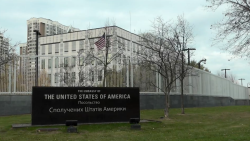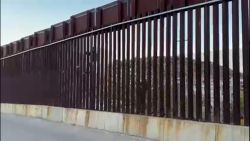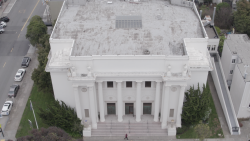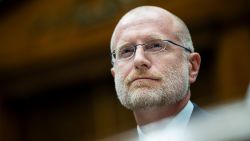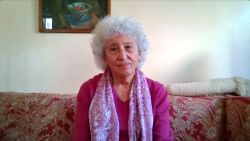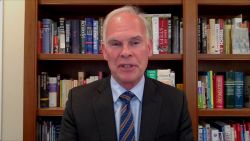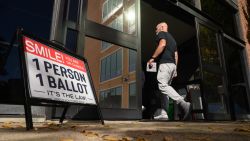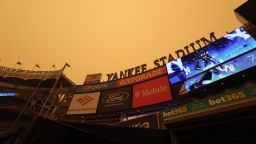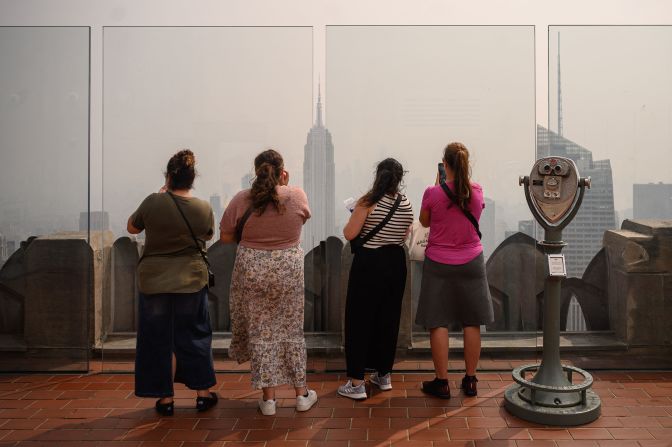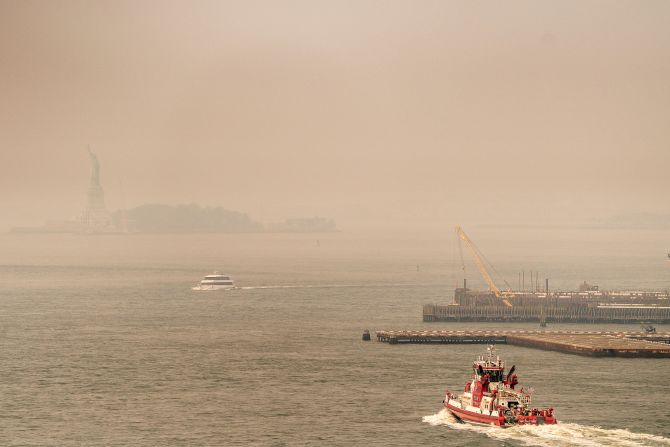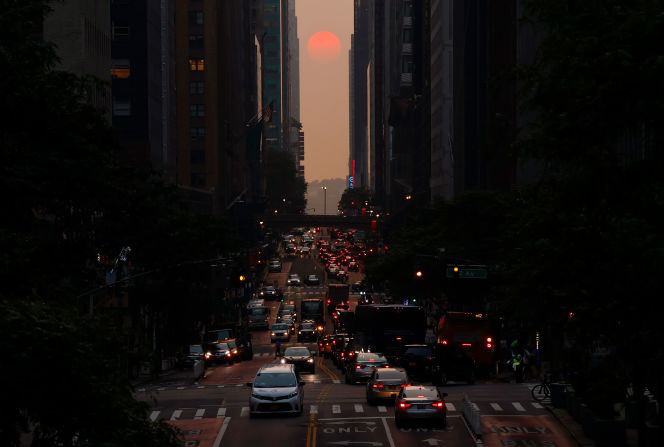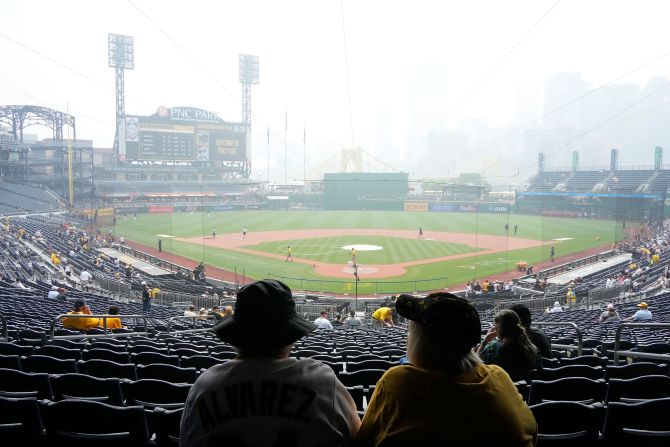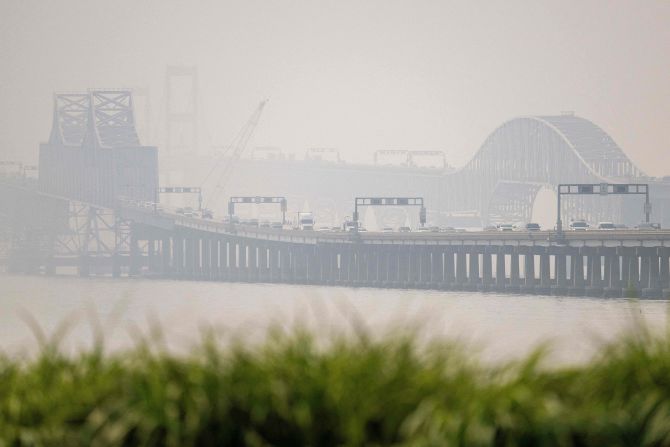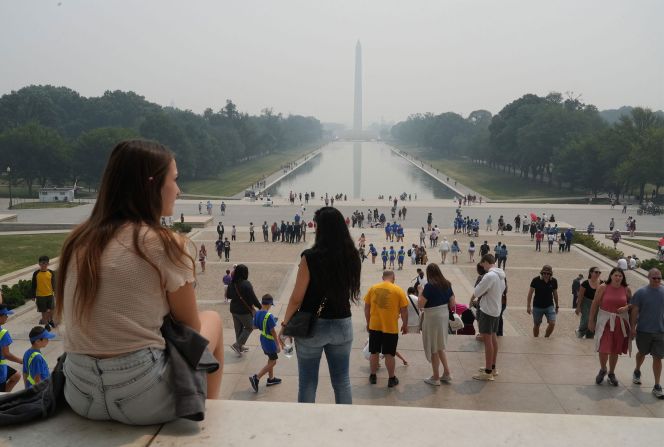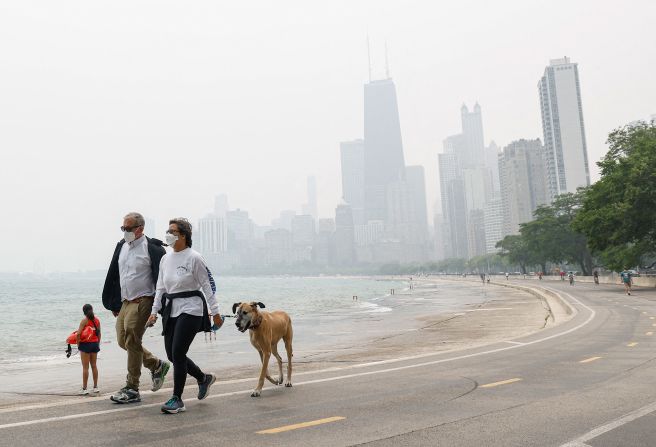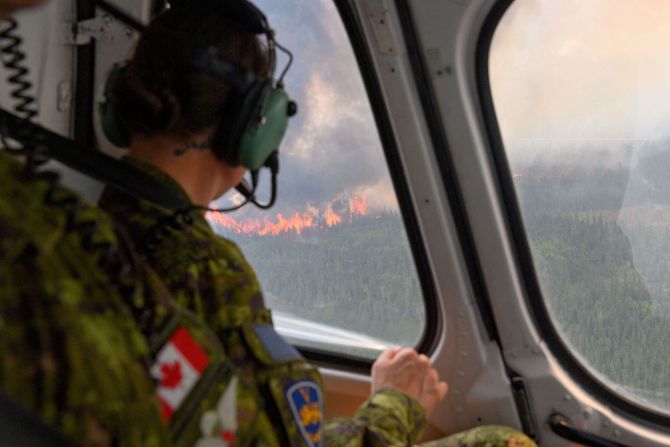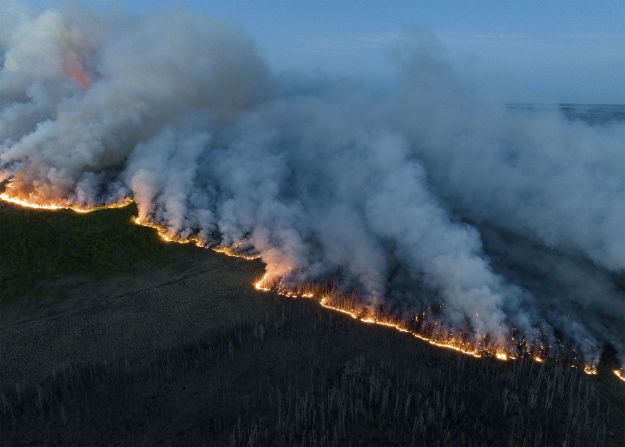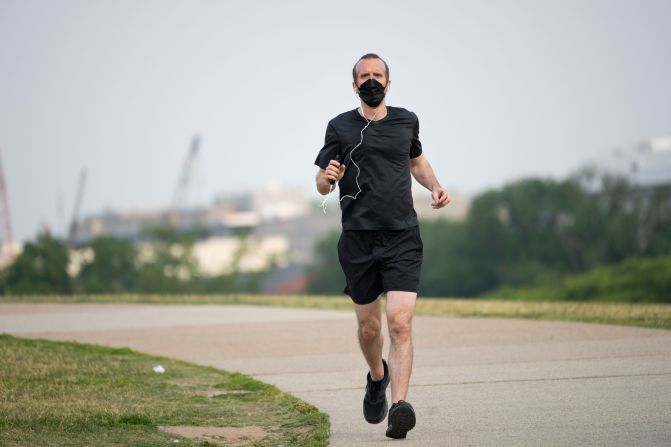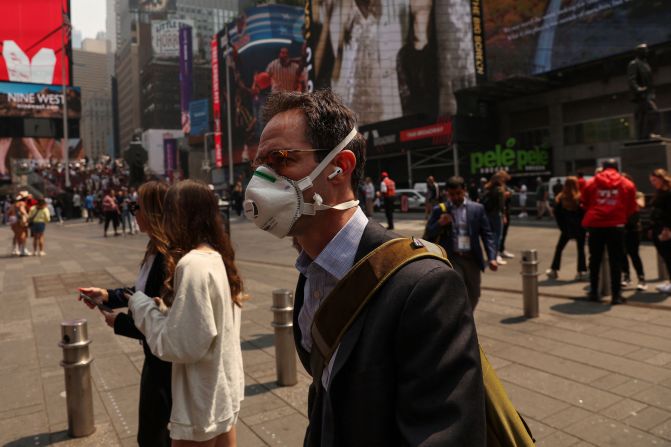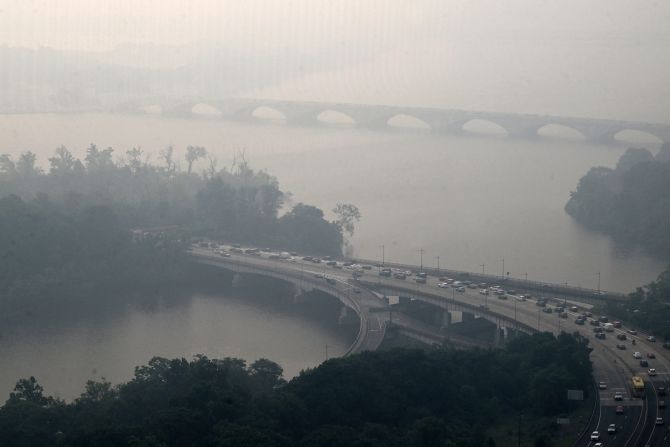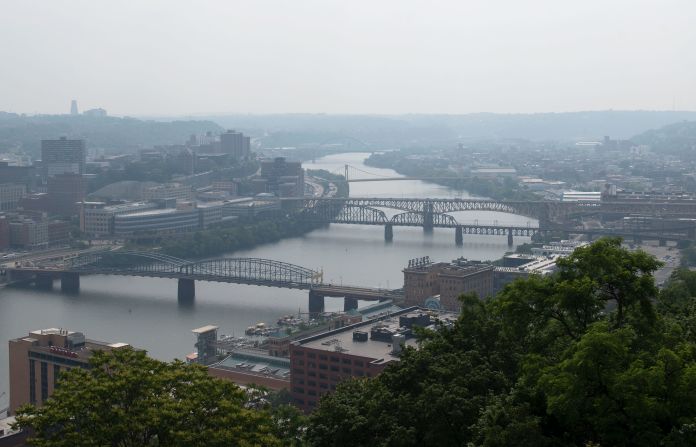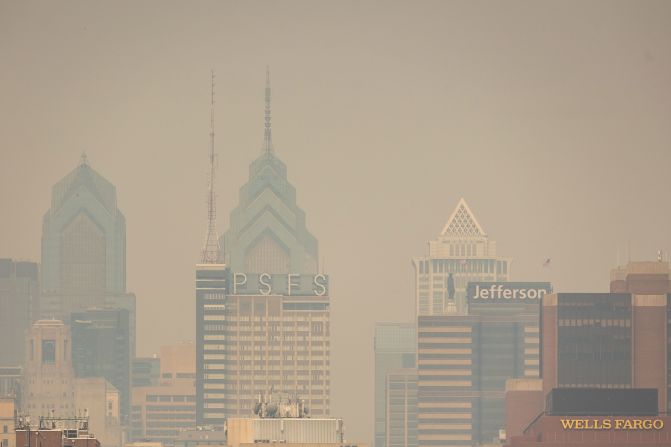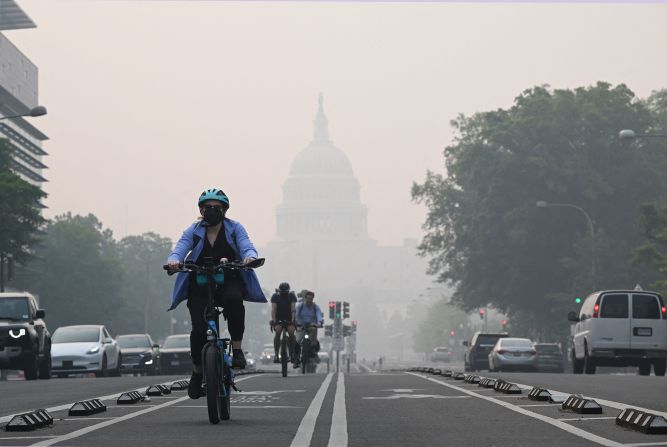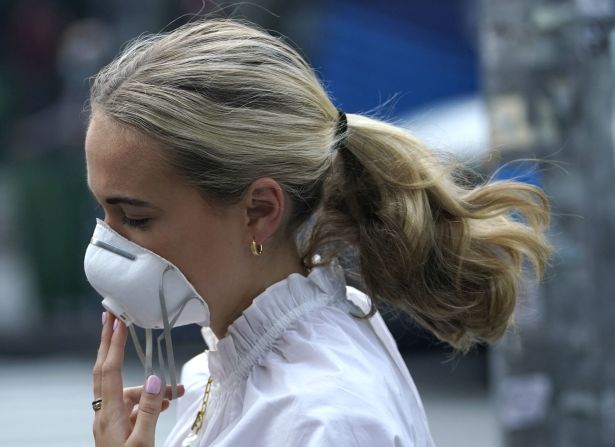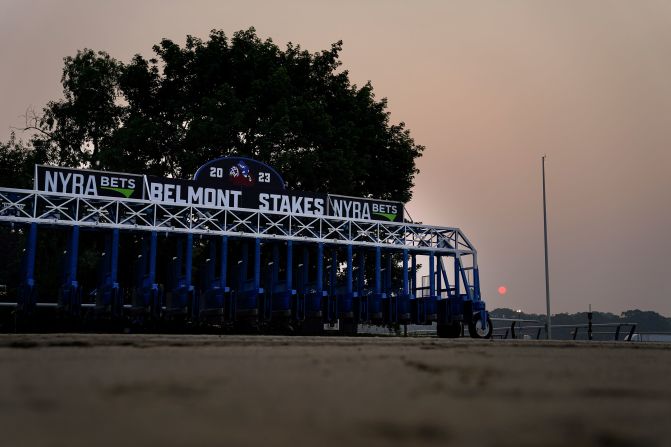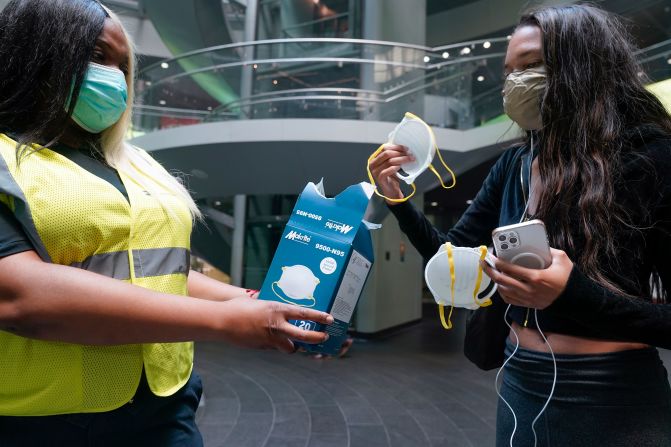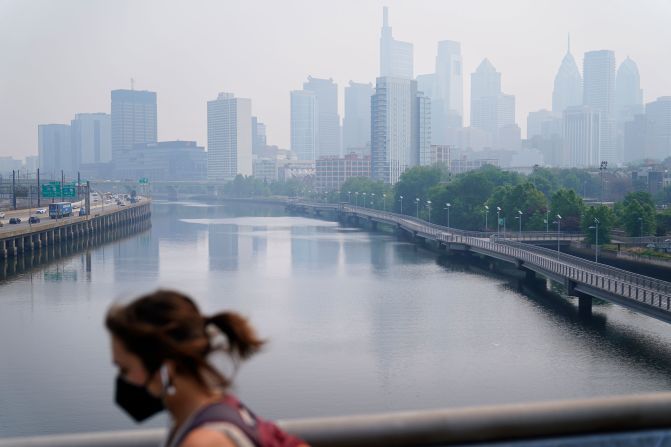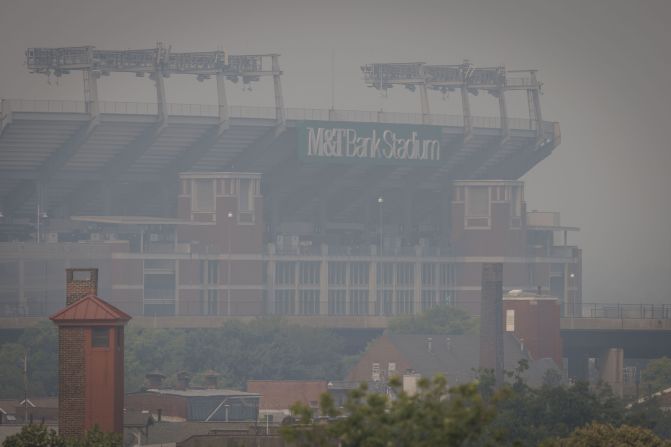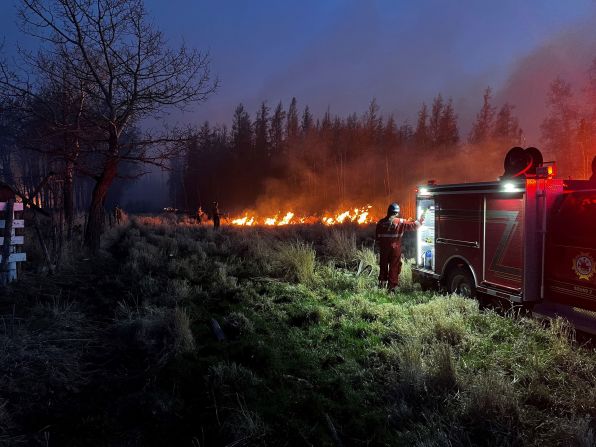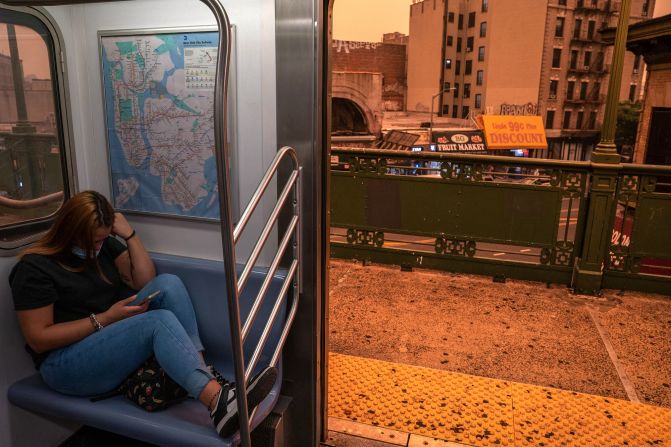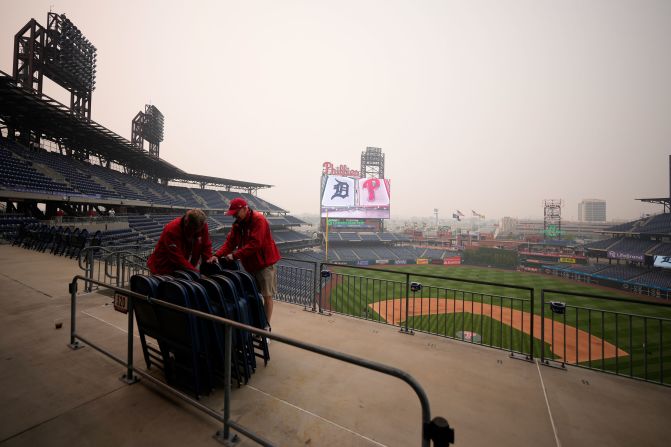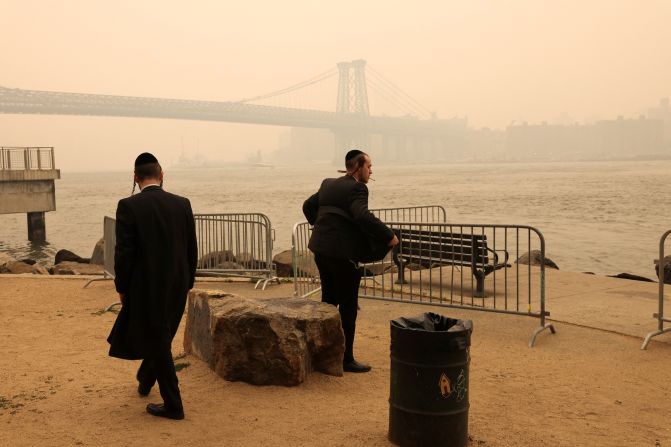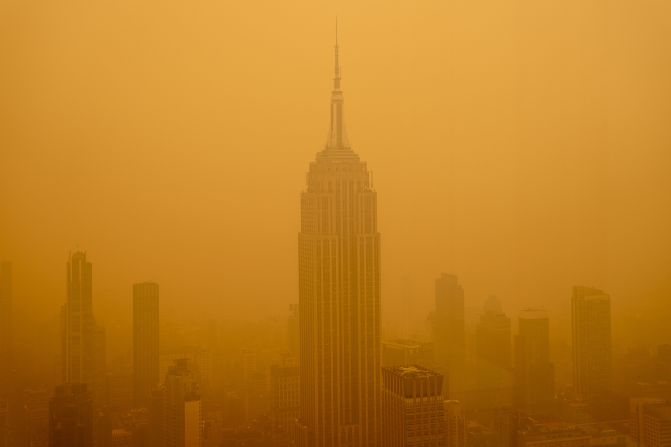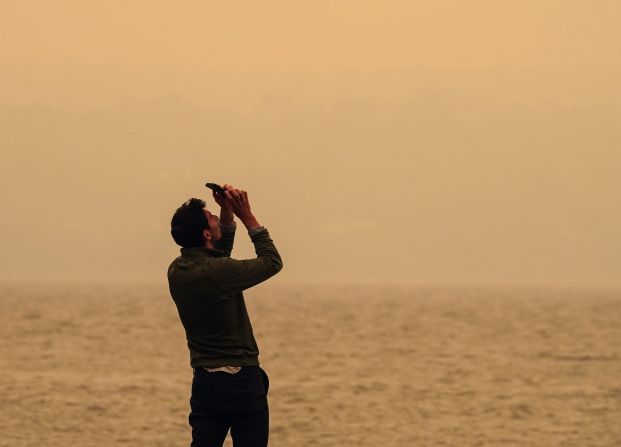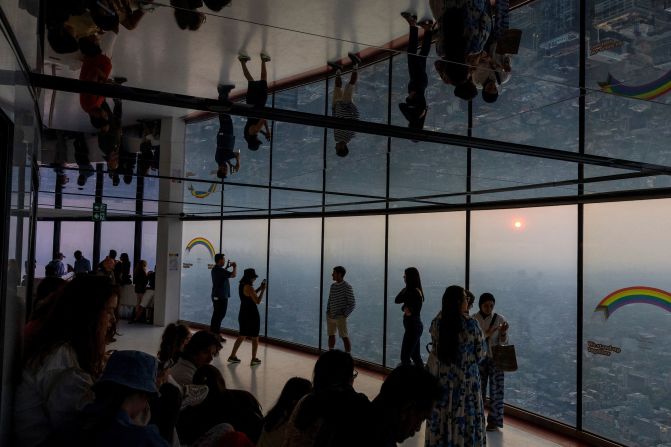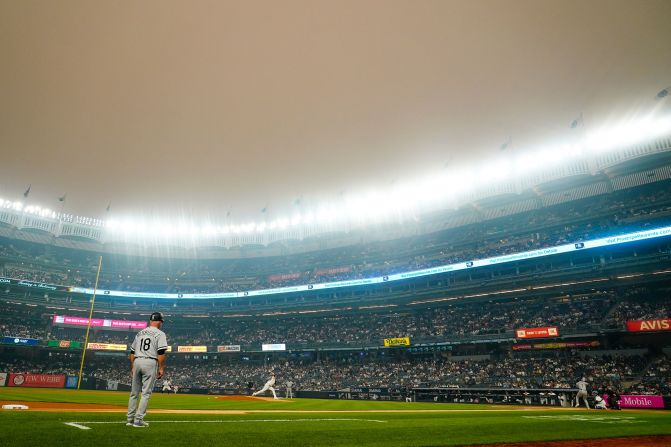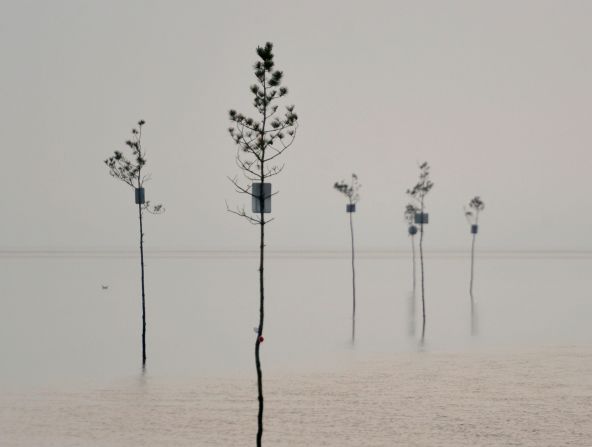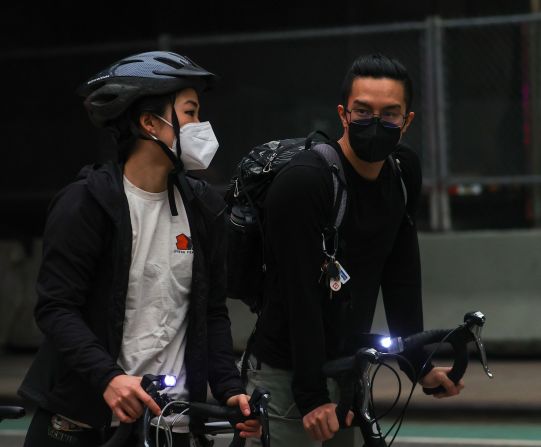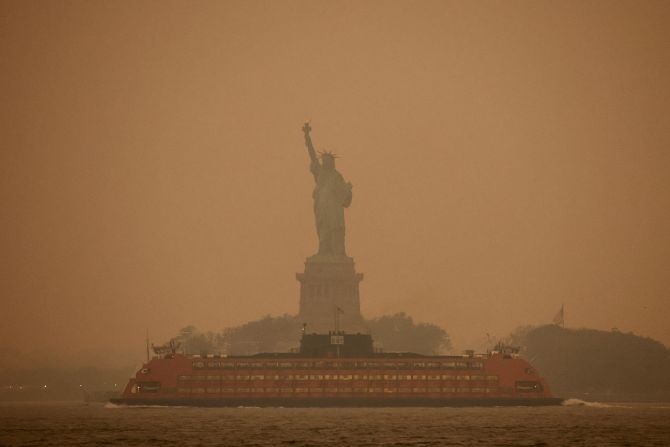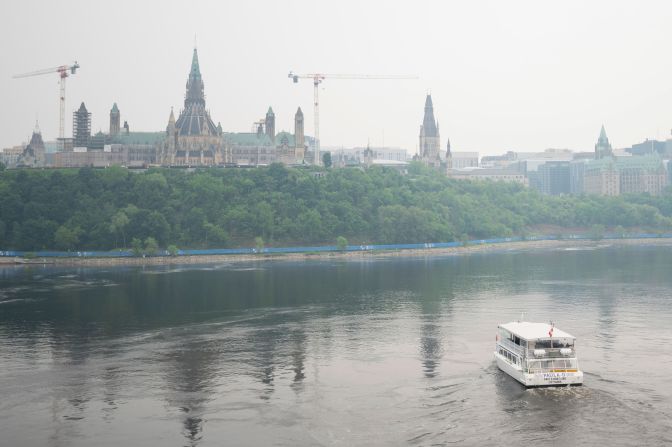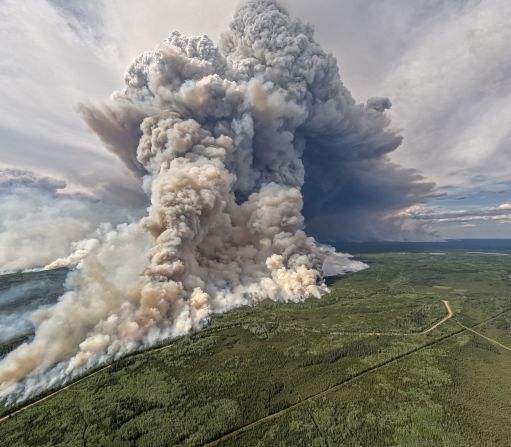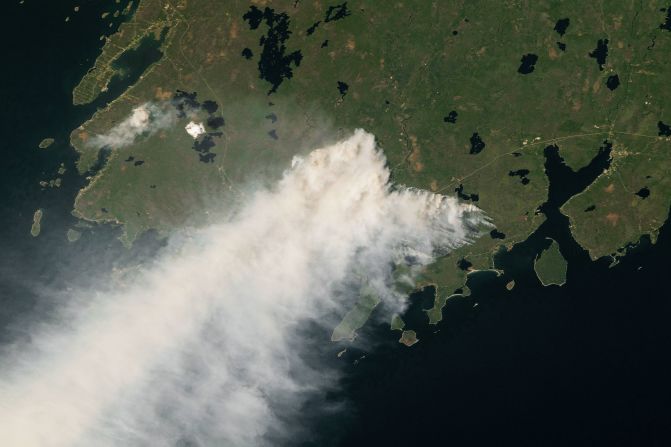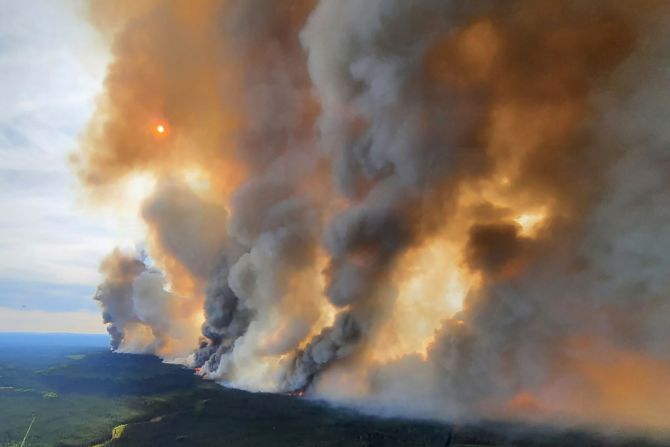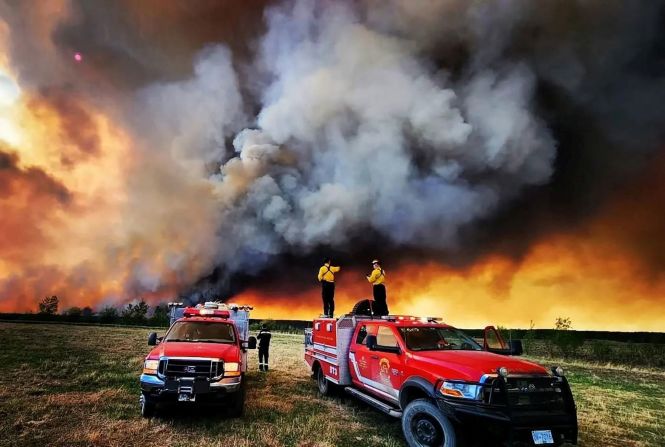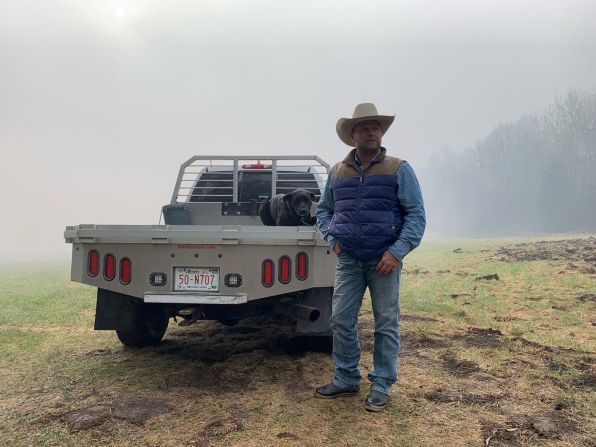Around 75 million people in the United States are experiencing dangerous air conditions because of smoke from wildfires raging across Canada, with officials urging them to limit time outdoors and mask up for safety.
Forecasts show the dangerous air conditions could linger for days but are expected to slowly improve across the East heading into the weekend.
LIVE UPDATES: Millions in US under air quality alerts
It took several days for the dense smoke from the Quebec fires to reach US cities including New York, Philadelphia and Washington. In Quebec, smoke from wildfires across the region is now considerably reduced.
Without substantial new smoke entering the US, the dangerous air conditions are expected to improve. But current weather patterns suggest the smoke will be trapped in impacted areas until it can dissipate, meaning improvements will come slowly.
Here’s the latest:
- Most of the Washington, DC, metro area is now experiencing hazardous air conditions. Air quality in New York and Philadelphia is still unhealthy but improving slightly from hazardous levels on Wednesday. New York, Charlotte, Detroit, Indianapolis, Delaware and Rhode Island, as well as other areas, remain under air quality alerts.
- Washington Mayor Muriel Bowser has suspended several nonessential citywide services.
- New York City could see “significant improvement” in visibility and air quality by Friday morning, Mayor Eric Adams said at a news conference Thursday morning.
- Air quality remains poor across most of New York state, Gov. Kathy Hochul said Thursday. Officials are still seeing “unhealthy” levels everywhere, except in the Adirondacks, Hochul said, calling the air quality a “public health crisis.”
- The Federal Aviation Administration said Thursday morning flights nationwide were delayed 34 minutes on average due to the conditions, with the maximum delay lasting an hour and 47 minutes. The agency issued ground stops for Philadelphia and New York airports earlier in the day.
- In a sign of improving conditions in Canada, most of the Halifax residents who were evacuated because of the wildfires will be allowed to return home Friday, Mayor Mike Savage said. About 16,000 people left their homes during the height of the wildfire evacuations and about 4,100 remain evacuated.

New York earned the distinction of having the most polluted air quality of any city in the world Wednesday. Conditions are improving, but air quality remains at unhealthy levels.
“As of right now, the smoke models are not indicating another large plume over the city, so there’s a chance for significant improvement by tomorrow morning and throughout the day tomorrow,” Adams said Thursday. He urged residents to continue masking outdoors, preferably with an N95 mask, which city officials were providing on Wednesday.
Some schools are closing or taking precautions to limit exposure to poor air quality conditions.
Children in New York City have a planned day off Thursday. On Friday, some students that had been scheduled for in-school instruction in the city will go remote. Two school districts in New Jersey have closed due to poor air quality. Other districts are canceling after-school programs or outdoor activities and field trips. The School District of Philadelphia is encouraging students to wear masks on their way to school Thursday morning.
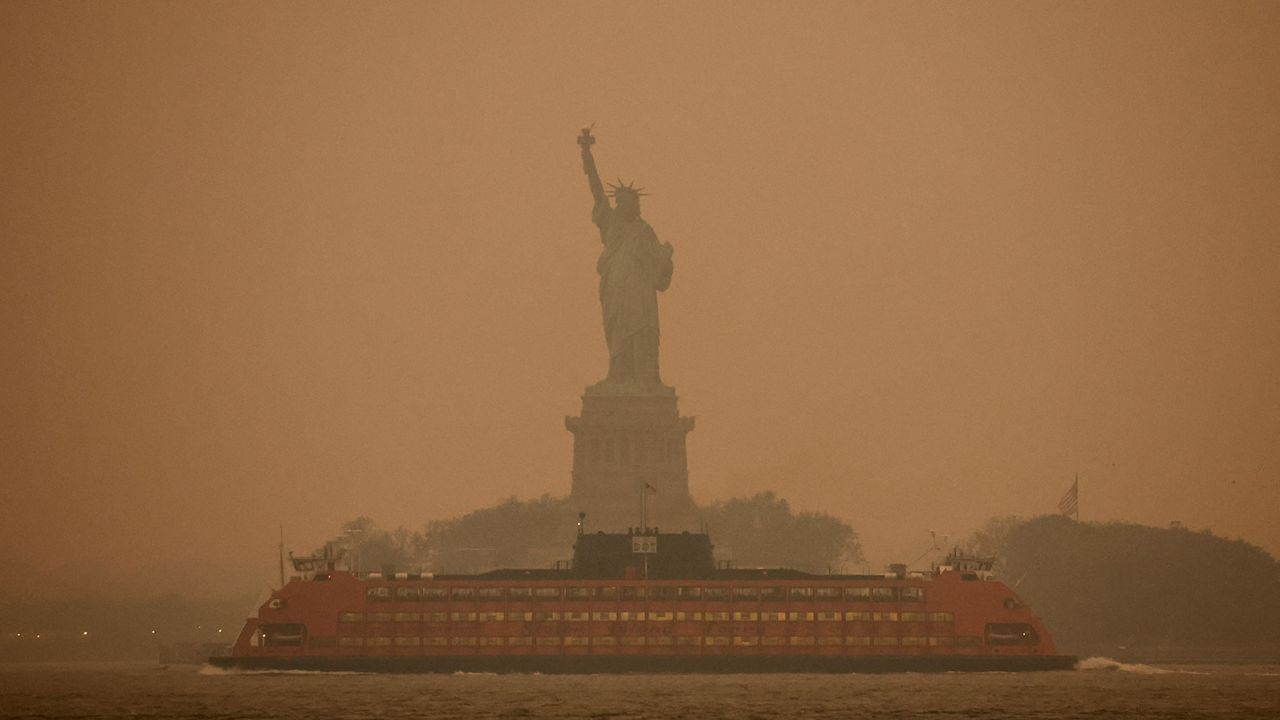
Smoke from the wildfires has delivered some of the poorest air quality measures in decades, said Mark Zondlo, an atmospheric chemist specializing in air quality monitoring and professor of civil and environmental engineering at Princeton University.
“What’s making it really unique – aside from the fires being huge by themselves – is the air is staying really close to the ground. So, instead of being wafted up and dispersing throughout the atmosphere or being in the layer 10,000 feet above us, it’s basically hugging the ground, and therefore it’s not dispersing,” Zondlo told CNN.
“The weather pattern is such that it’s funneling that smoke plume, keeping it tight close to the ground, and it’s coming for a bullseye right for us.”
Air quality in Canada has been on the decline as the ferocious blazes triggered evacuation orders, including for about 7,000 people in the Quebecois town of Chibougamau.
US President Joe Biden and Canadian Prime Minister Justin Trudeau discussed the wildfires’ impacts on air quality Wednesday, according to a statement from Trudeau’s office.
“Both leaders acknowledged the need to work together to address the devastating impacts of climate change,” the statement read.
In pictures: Canadian wildfires impact US air quality
Biden has directed federal firefighting resources to aid in stopping the fires, the White House said, adding that more than 600 firefighters and support personnel have already been deployed.
Biden on Thursday said it’s “very important” that communities impacted by the air pollution heed local guidance and check on their neighbors.
Meanwhile, New York state is sending forest rangers to Canada to help fight the wildfires in Quebec, Hochul announced Thursday. The first responders will depart from the Saratoga fire department on Friday.
Wildfires that lead to such poor air quality have become more common and severe as the planet warms from the impacts of human-induced climate change, experts have said.
“We typically see these impacts with wildfires in the Western US and in the Mountain West,” said Dr. Peter DeCarlo, an associate professor in the Department of Environmental Health and Engineering at Johns Hopkins University.
“The East Coast is generally a little bit more insulated from this type of thing. Our forests tend to be wetter and don’t burn as much, but looking forward with climate change, while this is kind of a unique experience that we’re seeing right now, it may become a lot less unique and a little bit more common in the future.”
CNN’s Ray Sanchez, Dave Hennen, Laura Ly, Robert Shackelford, Laura Ly, Rachel Ramirez, Meg Tirrell, Sara Smart, Mitchell McCluskey, DJ Judd, Jen Christensen, Paula Newton, Liam Reilly, Dugald McConnell and Brandon Miller contributed to this report.
